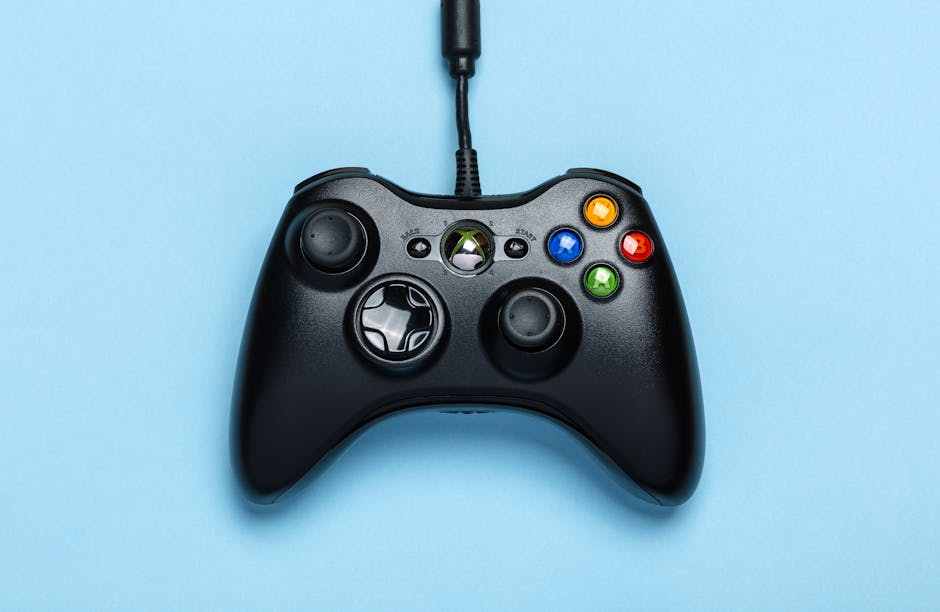VRR Compatibility: Why Some Budget TVs Fail for Xbox Series X

Imagine sinking into your couch, ready for a heart-pounding gaming session on your brand new Xbox Series X. You’ve meticulously chosen your game, the controller feels perfect in your hand, and anticipation hangs thick in the air. Then, it hits you: screen tearing. That jarring visual glitch that shatters the immersive experience you crave. One of the key technologies designed to combat this is Variable Refresh Rate (VRR), a feature heavily touted by the Xbox Series X. But not all TVs, especially budget-friendly models, are created equal when it comes to VRR support. This article delves into the intricacies of VRR compatibility, exploring why some budget TVs fall short of delivering the seamless gaming experience promised by the Xbox Series X.
Understanding VRR and its Importance
What is VRR?
VRR, or Variable Refresh Rate, dynamically synchronizes the refresh rate of your display with the frame rate output by your console. This eliminates screen tearing, that distracting visual artifact that occurs when your display refreshes at a different rate than the frames being delivered by the game. VRR creates a smoother, more fluid visual experience, minimizing stutter and input lag.
Why is VRR Crucial for Xbox Series X?
The Xbox Series X is designed to deliver high frame rates and stunning visuals. VRR enhances this capability by ensuring that every frame is displayed seamlessly, maximizing the console’s potential. Without VRR, you might experience screen tearing, especially in fast-paced games, which can significantly detract from the overall gaming experience.
The Benefits of a Smooth Gaming Experience
A smooth, tear-free gaming experience is more than just a visual perk; it can significantly impact your gameplay. Reduced input lag allows for more responsive controls, giving you an edge in competitive titles. The elimination of screen tearing and stutter creates a more immersive and enjoyable experience, allowing you to fully appreciate the stunning graphics and fast-paced action of modern games.
The Budget TV Dilemma
Cutting Corners on Connectivity
Budget TVs often cut corners to keep costs down, and one area where this is often apparent is in the HDMI ports. While they may advertise HDMI 2.0 or even HDMI 2.1, the bandwidth and feature set may be limited. This can result in inadequate support for VRR, even if the TV claims to be compatible. Manufacturers might implement a partial HDMI 2.1 specification, omitting crucial features like full bandwidth support, necessary for optimal VRR performance.
Panel Technology and Refresh Rate Limitations
Another area where budget TVs often compromise is the panel technology and refresh rate. Lower-end panels may have slower response times, leading to motion blur and ghosting, which can exacerbate the issues that VRR is designed to address. Furthermore, some budget TVs have lower refresh rates, limiting the effectiveness of VRR. For example, a 60Hz panel will not be able to take full advantage of the higher frame rates offered by the Xbox Series X, even with VRR enabled.
Software and Firmware Updates
Sometimes, VRR issues can stem from software or firmware limitations. Budget TV manufacturers may not prioritize regular updates, leaving users with outdated firmware that doesn’t fully support the latest gaming technologies. This can lead to compatibility problems with consoles like the Xbox Series X, even if the hardware is theoretically capable of supporting VRR. Checking for and installing the latest firmware updates is crucial for ensuring optimal performance.
Choosing the Right TV for Xbox Series X
Decoding HDMI Specifications
When choosing a TV for your Xbox Series X, pay close attention to the HDMI specifications. Look for TVs with full HDMI 2.1 bandwidth support to ensure optimal VRR performance. Don’t just rely on marketing terms; research the specific HDMI capabilities of the TV model you are considering.
Prioritizing Panel Technology
Consider the panel technology and refresh rate. Look for panels with low response times and higher refresh rates, ideally 120Hz or higher, to fully leverage the capabilities of the Xbox Series X and VRR. A higher refresh rate enhances the smoothness and responsiveness of your gaming experience.
Researching Manufacturer Support
Research the manufacturer’s reputation for software and firmware updates. Choose a brand known for providing regular updates to ensure ongoing compatibility with the latest gaming technologies and to address any potential VRR issues that may arise.
Conclusion
Investing in a TV that fully supports VRR is essential for maximizing the potential of your Xbox Series X. While budget TVs can be tempting, it’s important to be aware of the potential compromises they make in terms of HDMI connectivity, panel technology, and software support. By understanding the intricacies of VRR compatibility and carefully considering the specifications of your chosen TV, you can ensure a seamless, immersive, and tear-free gaming experience.
| Feature | Budget TV | Premium TV |
|---|---|---|
| HDMI Version | HDMI 2.0 (Limited) | HDMI 2.1 (Full Bandwidth) |
| Refresh Rate | 60Hz | 120Hz or higher |
| VRR Support | Often limited or absent | Fully supported |
- Check for HDMI 2.1 compatibility.
- Look for a high refresh rate panel.
- Research the manufacturer’s firmware update policy.

Leave a Reply